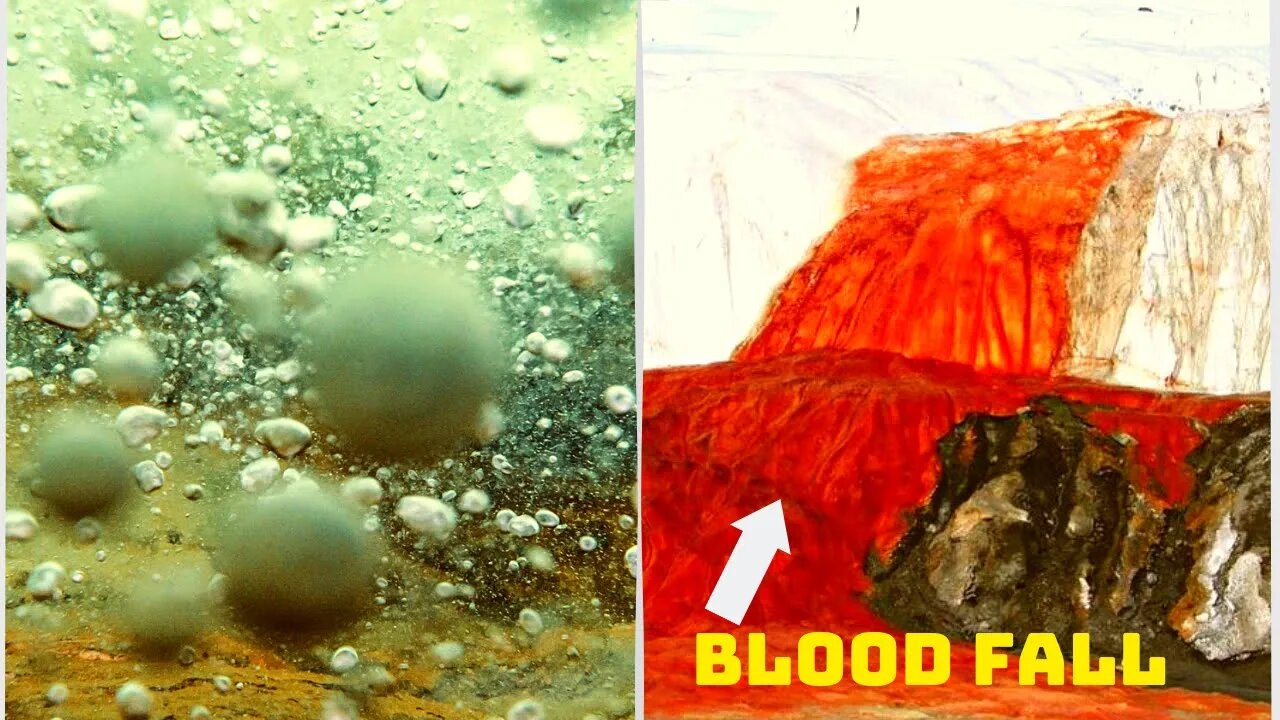Premium Only Content

The New Discovery In Earth That Scares Scientists!
In this video, we're going to be discussing the new discovery in Earth that scares scientists! This discovery has them quite worried and they're working hard to find out more information about it.
So what is this discovery that's so concerning? Well, in a nutshell, it's the discovery of Blood fall in Antarctica. Scientists are unsure of what's causing this increase in size, but they're quite concerned about it.
Subscribe to Daily Dose Of Fact - https://bit.ly/2Z4b0m0
0:29 Number 1 Blood Falls, Antarctica
There are a few mysteries that we have solved. One of these is the case of Blood Falls in Antarctica, with its terrifying ruby-red waters flowing from the Taylor Glacier.
What's going on here? It's very simple. "The deep red coloring is caused by oxidized iron in brine saltwater," Forbes reports, referring to the same process that causes iron to rust in a dark red color. When iron-containing saltwater comes into contact with oxygen, the iron oxidizes and turns red, effectively dying the water a deep red color."
1:01 Number 2 The Wave, United States
Some places on Earth appear to be... otherworldly. If you showed a picture of The Wave to someone who had never heard of it, they might think they were looking at a landscape captured by high-tech NASA equipment.
That is not the case, however. The Wave is a stunning red sandstone formation located at the Vermilion Cliffs National Monument on the Arizona/Utah border. The Jurassic period is said to have formed the rock formation, and access is strictly controlled. As a result, only a limited number of lucky lottery draw winners are granted access each day.
1:34 Number 3 The Monolith Of Uluru, Australia
If there is one country that occasionally perplexes the rest of the world, it has to be Australia.
The location is a real mystery. One of its most popular tourist attractions is Uluru. This mysterious and sacred monolith, better known as Ayers Rock around the world, has perplexed visitors for centuries. It's just one rock. How is that possible?
The indigenous people who want to see their culture respected will prohibit visitors from climbing Uluru beginning in 2019.
2:03 Number 4 Thor’s Well, United States
Thor's Well (or Spouting Horn) is a narrow opening in the rocks on Kauai's coast. Water rushes into the opening with the waves and is expelled with great force. The pressure can propel it fifty feet into the air! Needless to say, it's quite dangerous at close quarters.
2:19 Number 5 The Nasca Lines, Peru
Crop circles are one of the world's most enduring and well-publicized mysteries. The discovery that some were hoaxes did little to calm them down. They were believed to be the landing patterns of some intergalactic craft and all kinds of other strange things along those lines.
The Nasca lines in Peru are a similar phenomenon. More than a thousand of these massive geoglyphs have been discovered etched in the desert, with some attributed to the Nasca people (of 200 to 700 AD). The Nasca lines, as we know them, are only visible from above and are incredibly intricate patterns drawn with a single line.
2:51 Number 6 The Boiling River, Peru
This river, on the other hand, is not a legend. It's true. Located in a remote area of the jungle, these waters can reach temperatures of up to 200 degrees Fahrenheit despite the absence of a volcano. According to current research, "a fault-led hydrothermal feature is causing the river to reach such temperatures."
3:11 Number 7 Socotra Island, Yemen
Isolated and remote locations are frequently ideal habitats for unusual life.
This small island lies east of the Horn of Africa. According to All That's Interesting, its isolation has resulted in a slew of strange flora and fauna. Modernization efforts on the island harmed the landscape, so it was designated a World Heritage Site a decade ago. And rightly so, because the ridiculous dragon's blood tree deserves to be protected.
3:38 Number 8 The Lascaux Caves, France
Socotra Island discovered that the construction of an airport and other facilities harmed its valuable animal and plant population.
The Lascaux Caves are a well-known example. This well-known 'gallery' of cave paintings, estimated to be around 17,300 years old, was discovered by chance in 1940 by a group of boys. Soon after, it was opened to the public, and the combination of visitors' breath, body heat, and moisture threatened to destroy the artwork forever.
The caves were closed and access was prohibited in 1963. Curious visitors can instead enter a replica.
4:14 Number 9 The Red Beach, China
-
 LIVE
LIVE
Lofi Girl
2 years agolofi hip hop radio 📚 - beats to relax/study to
1,338 watching -
 2:09:32
2:09:32
Side Scrollers Podcast
21 hours agoThese People Are Insufferable Twats | Side Scrollers Live
53.7K9 -
 2:57:50
2:57:50
The Pascal Show
21 hours ago $2.26 earnedDIDDY TRIAL LIVE! Jane Doe 'Victim #2' Defense CROSS! Diddy Trial Day 22
31.5K -
 7:58:54
7:58:54
TheBeardedNerdd
10 hours ago🔴 LIVE- Tarkov Labs and what not
25.4K1 -
 13:28
13:28
Actual Justice Warrior
20 hours agoBaltimore Squatters STEAL Taxpayer Funded Housing
37.1K7 -
 LIVE
LIVE
DoldrumDan
8 hours ago $0.45 earnedRAREST WEAPON - CHALLENGE RUN - First Playthrough - Elden Ring ?! DAY 18
189 watching -
![[Finale] MindsEye l Day 2 (June 12th)](https://1a-1791.com/video/fww1/cf/s8/1/B/T/U/S/BTUSy.Tkob-small-Continuing-MindsEye-l-Day-2.jpg) 6:29:11
6:29:11
darkprometheus112
9 hours ago $0.44 earned[Finale] MindsEye l Day 2 (June 12th)
15.8K1 -
 LIVE
LIVE
B_DubzZ
3 hours ago🔴Live | Warzone
58 watching -
 1:13:58
1:13:58
Larry O'Connor
20 hours ago🚨BREAKING: Democrat Governors TORCHED LIVE! Newsom Attacks OUR SHOW!
26.7K37 -
 8:22
8:22
Nate The Lawyer
1 day ago $2.45 earnedTikTok’s #1 Star Detained & Self DEPORTED in Trump’s Immigration Blitz!
26.9K11